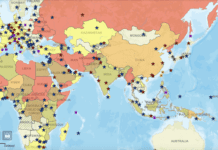
Planning global meetings leaves no room for assumptions. Everything, from Wi-Fi to communication, needs to be handled with an understanding of the culture and conditions under which you are working.
Bonnie Koenig of Going International, a consultancy providing strategic planning, organizational and program development, staff training, and other services, offers the following 6 tips.
1. Time zones: If you want to include a global audience, take time zones into consideration when planning anything that will happen in ‘real time’ (webinars, livestreaming. Etc.) Make sure all communications you send out that have a time also include which time zone that time is in. A good web site for checking time zones or planning a meeting across time zones is www.timeanddate.com
2. Bandwidth: Recognize that bandwidth can vary dramatically around the world by availability, quality and cost. This will be important, for example, if you are on an web-based group call (like Skype or Google Hangout) or a webinar. Some participants may regularly lose the connection or have a harder time hearing. Using just the audio without the video portion can help to minimize bandwidth usage and strengthen the audio connection.
3. Language: In an online or in-person meeting, if everyone is not as comfortable in English, make sure to speak slowly, and allow for (and encourage) periodic clarifications as needed. Translate more challenging phrases or concepts.
4. Acronyms: Acronyms tend to be very local. The more diverse the group, the more you should minimize the use of acronyms or make sure you clarify what the acronym stands for.
5. Humor: Be careful of humor on social media. It does not always translate in short phrases without more context.
6. Relationships: Despite an increasingly virtual world, taking the time to build and nurture personal relationships is appreciated by those of all cultures. It can take time to learn the nuances of communicating with people of various cultures, but it is almost always worth that time investment.










